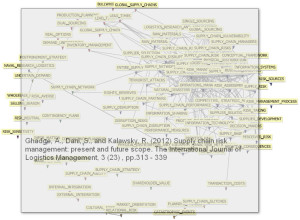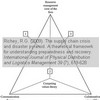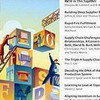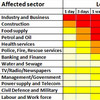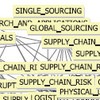 What is the potential future for supply chain risk management? That is what Abhijeet Ghadge, Samir Dani, and Roy Kalawsky try to answer in their 2012 paper on Supply chain risk management: present and future scope. This paper, so they write, examines supply chain risk management (SCRM) from a holistic systems thinking perspective by considering the different typologies that have evolved as a result of earlier research. Based on this they outline future requirements and research opportunities in SCRM.
What is the potential future for supply chain risk management? That is what Abhijeet Ghadge, Samir Dani, and Roy Kalawsky try to answer in their 2012 paper on Supply chain risk management: present and future scope. This paper, so they write, examines supply chain risk management (SCRM) from a holistic systems thinking perspective by considering the different typologies that have evolved as a result of earlier research. Based on this they outline future requirements and research opportunities in SCRM.
Systematic Literature Review – SLR
What fascinates me with this paper is the systematic literature review (SLR) methodology the authors employed to evaluate and categorise a literature survey of quality articles published over a period of ten years (2000-2010). This is very similar to a literature review on organisational resilience that I wrote about a few weeks ago. However, what really strikes me is how this paper visualises the results, clearly identifying which research strands – or rather: clusters – that exist:
Based on the clusters, the following typologies were identified for further data screening of papers on supply chain risk management.
- Based on type of risk: organizational risk, network risk and other risks comprising of environmental (man-made and natural disasters), political/social and exchange rate risks.
- Based on management level: mitigation strategies are operational, tactical or strategic.
- Based on research methodology: qualitative and quantitative research methodologies.
- Based on risk management process: risk identification, assessment and mitigation and/or control.
- Based on approach to SCRM: the risk mitigation approach could be either proactive or reactive.
In the end seven distinct research areas were found as possible starting grounds for future research:
Behavioural perceptions in risk management
Research on developing practices for unbiased or rational decision making is unexplored area in SCRM approach demands research.Sustainability factors
It is inferred from this research that sustainability factors (economic, environmental and social) will have a larger influence on how SC are designed in the future.Risk mitigation through collaboration contracts
It was evident during the analysis that, supplier default risk, quality risk and management risk within SC network are underexplored.Visibility and traceability
Risk mitigation (proactive management or reactive risk response) can be greatly improved if information is readily available, is timely and accurate.Risk propagation and recovery planning
Understanding the risk potential beyond the dyad through the chain and then the network provides an insight into how risk can propagate.Industry impact
Although, this study is related to academic work on SCRM, it is vital to put it in the context of the impact that the work creates within industry.Holistic approach to SCRM
Holistic SCRM is found to be lacking in current literature and systems approach has the potential to guide in that direction.
Conclusion
This is a paper well-worth considering if plan on doing any research within supply chain risk management.The seven distinctive research factors along with the key references within those will provide researchers with ample options for hypotheses for future work. I for one am likely to link up with the sustainability factor, something I haven’t blogged about for a long time, not since Carter and Easton (2011) Sustainable supply chain management: evolution and future directions.
Reference
Ghadge, A., Dani, S., and Kalawsky, R. (2012) Supply chain risk management: present and future scope. The International Journal of Logistics Management, 3 (23) , pp.313 – 339 DOI: 10.1108/09574091211289200
Author links
- linkedin.com: Samir Dani
- linkedin.com: Abhijeet Ghadge
- linkedin.com: Roy Kalawsky
Related posts
- husdal.com: SCRM Research gaps
- husdal.com: SCM – past, present and future

